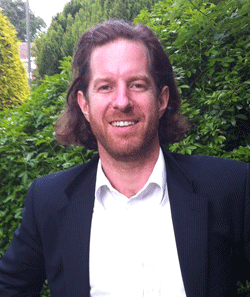Comment from Dr Steven Cox, Director of Screening at CRY:

“However, it is important to identify that there are limitations to this data and that it is in the early stages of development. The report only comments on SADS or sudden arrhythmic death syndrome (a problem with the heart’s electrical rhythm).
“Many people confuse SADS with Young Sudden Cardiac Death but they are not the same.
NHS “Every week in the UK, 12 apparently fit and healthy young people (that is, aged 35 and under) die suddenly from a previously undiagnosed heart condition – around 600 deaths annually. Deaths from SADS are just a proportion of these.
“Indeed, the data on which this report is based includes just 47 deaths in the last year, representing a very small proportion of the much bigger issue of young sudden cardiac death.
“Over 200 bereaved families contacted CRY in 2012. Many of these people are still trying to understand what caused the death of their child, sibling or partner – whether from a heart rhythm condition such as Long QT or Brugada Syndrome or from a heart muscle condition such as cardiomyopathy. Once identified, the cause of death ceases to be classed as ‘SADS’.
Dr Cox continues; “Overall, the findings highlight some important issues. Suggesting that 1/3 (one third) of the deaths occur whilst ‘at rest’ reinforces the fact that many of these tragedies are unrelated to exercise. This is why CRY has always made its screening services available to any young person regardless of their involvement in sport.
“It also states that 1/4 (one quarter) of the people died whilst in bed or asleep, confirming that we cannot simply rely on reacting to cardiac arrest by defibrillation. Whilst it is important to have CPR training and defibrillators as widely available as possible, it is imperative that we seek to identify people at risk through screening, prior to the cardiac arrest. Prevention of a cardiac arrest is better than risking one.
“Only in a small percentage of cases was there a history of illegal drug use reported. Often this cruel rumour is perpetuated after a young person has died. False, inappropriate lifestyle accusations greatly increase the family’s suffering at this terrible time.
“Finally, whilst the report says that people aged 30 to 39 are the age group most at risk of sudden death from irregular heart rhythms, at CRY we stop our cardiac testing at the age of 35 because after this age, the most significant cause of sudden cardiac death is from coronary heart disease. However, we know there are many SADS deaths over 35 that could have been prevented if identified earlier.”
FOR MORE INFORMATION OR TO ARRANGE AN INTERVIEW WITH A CRY REPRESENTATIVE, CARDIOLOGIST OR CASE STUDY, PLEASE CALL THE CRY PRESS OFFICE ON 020 7112 4905 / 0770 948 7959 or email jo.hudson@trinitypr.co.uk





